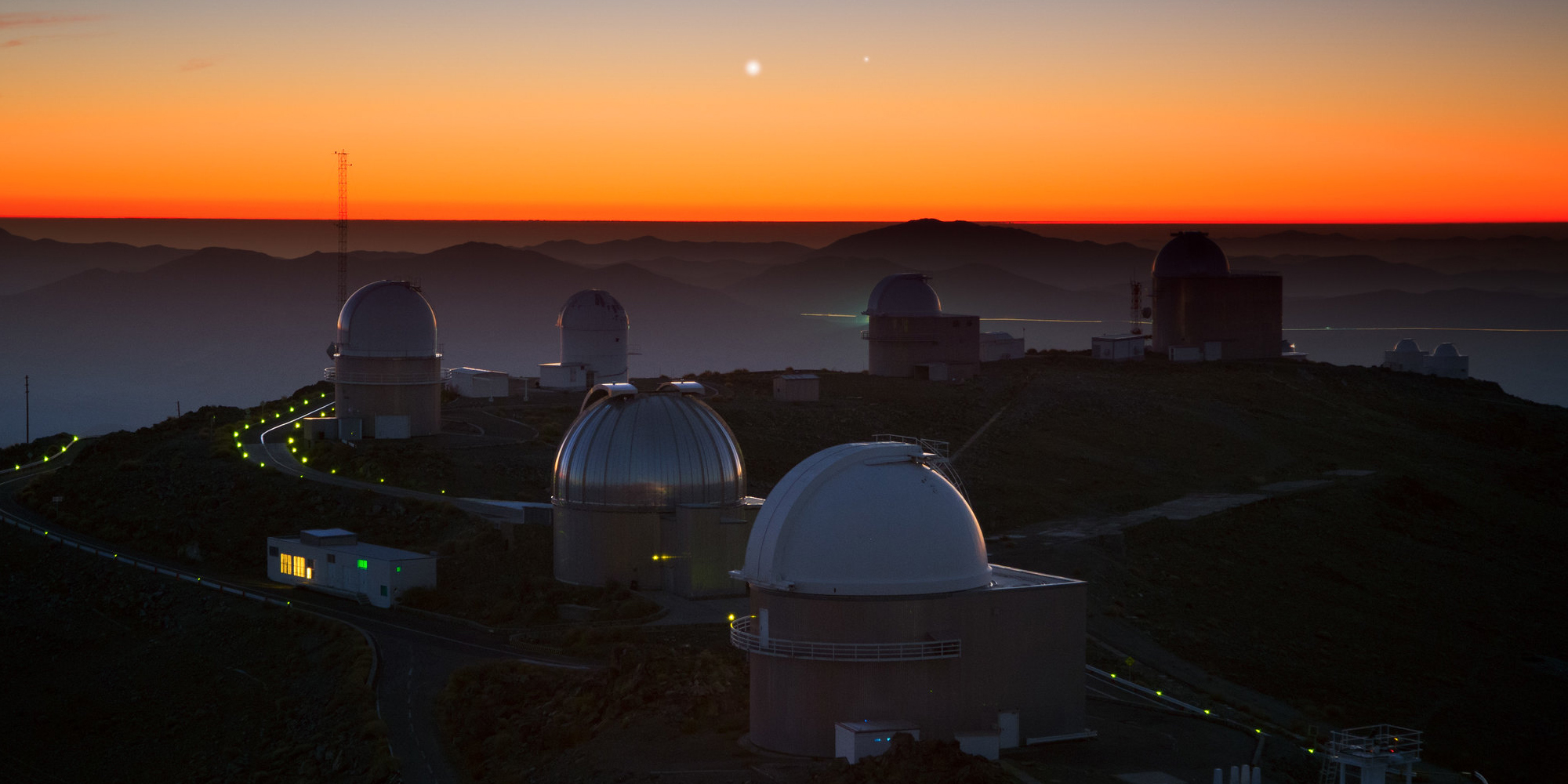press release as PDF
photo album astronomy in Deep Space 8K
Ars Electronica Blog
(Linz, 5.10.2022) This November, it finally has to work; in the third attempt, sensor-equipped dummies are to be brought into lunar orbit and then back to Earth as part of the “Artemis 1” mission. The success of this endeavor, in turn, will determine whether NASA and ESA manage to stay on schedule and put people on the moon in 2025…
Anyone who wants to brush up on their knowledge of space travel, space and Earth observation or who can never learn enough about our solar system and our home planet anyway, is in the right place at the Ars Electronica Center Linz throughout October. The program includes lots of journeys through the universe, fascinating excursions to observatories in Chile’s Atacama Desert, exciting insights into the everyday work of astronomers and an overview of various astronomical measurement methods. The Astronomy Month of October kicks off on Saturday, October 8, 2022, which is dedicated to the European Southern Observatory ESO, which is celebrating its 60th anniversary these days.
Deep Space Family Astronomy
SAT 8.10.2022 / 10:00 a.m. – 10:30 a.m. & 4:00 p.m. – 4:30 p.m.
Thousands of twinkling points of light, some dimmer, some brighter, in shades of blue or yellow or pale pink: gazing at the night sky has always held a great fascination for people. In the Ars Electronica Center’s Deep Space 8K, 16-by-9-meter wall and floor projections take us on breathtaking journeys through space, including side trips to the ISS, a black hole and a neutron star.
Deep Space Lecture: Discovering the Southern Sky with a Virtual Tour of ESO’s Telescopes
SAT 8.10.2022 / 10:30 a.m. – 11:30 a.m.
Peter Habison, astronomer and ESO Science Outreach Delegate for Austria, invites you on a virtual trip to the Chilean Atacama Desert. This is one of the driest regions on earth and offers best conditions for astronomical observations with cloudless skies on about 350 days a year. Visitors can enjoy powerful images of the Milky Way, the Large and Small Magellanic Clouds, Alpha Centauri and the Southern Cross. Finally, a visit to the Very Large Telescope (VLT), one of the most modern astrophysical observatories in the world, is also on the agenda.
Deep Space Lecture: Under the Southern Cross – Astronomy in Chile
SAT 8.10.2022 / 10:30 a.m. – 11:30 a.m.
As early as the mid-20th century, several nations recognized the special nature of Chile’s Atacama Desert for celestial exploration and built numerous astronomical observatories there. The Deep Space Lecture with Peter Habison, astronomer and ESO Science Outreach Delegate for Austria, takes us to northern Chile and tells of extraordinary landscapes and special places where people have dedicated themselves to the exploration of the southern sky.
Lecture: Perfect skies and swinging stars – the observatory of La Silla
SAT 8.10.2022 / 1:30 p.m. – 2:15 p.m. / Seminar room
Paul Beck from the Institute of Physics at the Karl-Franzens University of Graz, Austria, will give a lecture on the ESO Observatory of La Silla and tell of a typical day of astronomers at professional observatories. Besides beautiful pictures and night shots, Paul Beck will also give an insight into different astronomical measurement methods.
Lecture: What the painter Matisse has to do with the European Southern Observatory ESO
SAT 8.10.2022 / 2:15 p.m. – 3:00 p.m. / Seminar room
A picture is worth a thousand words. But when it comes to the centers of galaxies, the formation of planets or the surface of stars, sharp images require the technique of interferometry. Starting at 14:15, visitors will learn how this method works, how it is used at the Paranal Observatory of the European Southern Observatory, and where the painter Henri Matisse comes into play.
Open Workshop: Space Craft Material Kit
SAT 8.10.2022 / 3:00 p.m. – 5:00 p.m. / CitizenLab
What are spaceships, rockets and satellites actually made of and what requirements must the materials used for them meet? In this workshop, children become materials researchers and conduct experiments in which they learn about the building materials used in space travel.
Lecture: Adaptive optics – glasses for giant telescopes
SAT 8.10.2022 / 3:00 p.m. – 3:45 p.m. / Seminar room
The image quality of modern giant telescopes is significantly reduced by turbulence in the atmosphere. This can be remedied by adaptive optics systems, with the help of which the effects of turbulence on the recorded image can be reconstructed in real time and corrected with the help of deformable mirrors already during image acquisition. In addition to suitable hardware, sophisticated mathematical algorithms are needed to calculate the corrections. The lecture will give an overview of the techniques used and will also reveal which contributions to the adaptive optics systems of ESO’s Extremely Large Telescope come from Linz.
Theme barrels in the Children’s Research Laboratory
SAT 8.10.2022 / 10:00 a.m. – 5:00 p.m.
Young researchers take note: In the Children’s Research Lab, there are all kinds of interesting facts to learn about scientific findings and new technologies of the 21st century. By means of various tasks, important topics of the present are dealt with and connections are shown.
Photo:
virtual journey through the universe: Uniview 3.0 – pulsar / photo: Philipp Greindl / print version / album
Photo:
virtual journey through the universe: Uniview 3.0 – black hole / photo: Robert Bauernhansl / print version / album
Photo:
virtual journey through the universe / photo: Robert Bauernhansl / print version / album
Photo:
La Silla Observatory / photo: Y. Beletsky (LCO)/ESO / print version / album
Photo:
Artist’s rendering of the Extremely Large Telescope / photo: ESO/L. Calçada / print version / album
Photo:
comparison Extremely Large Telescope – St. Stephan’s Cathedral / photo: ESO / print version / album
